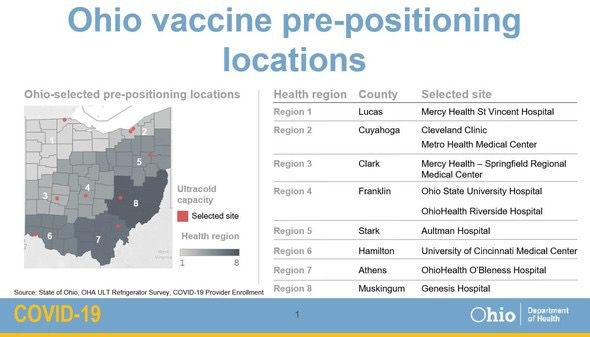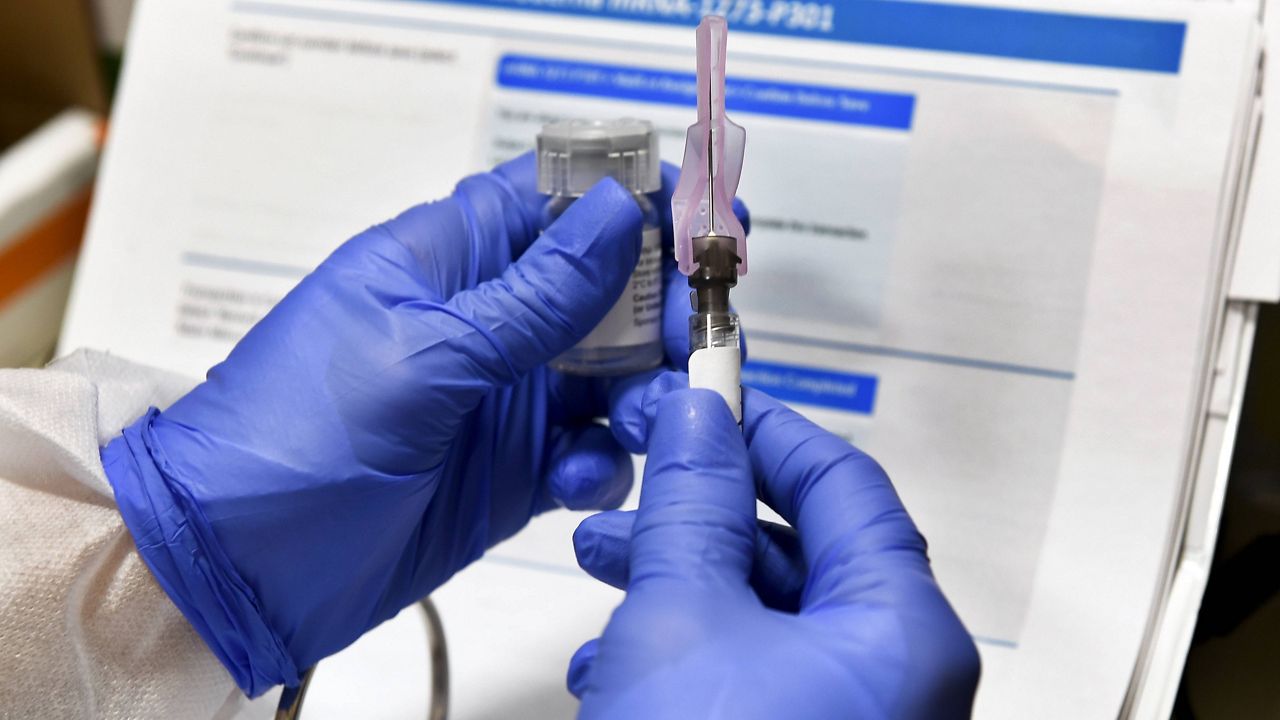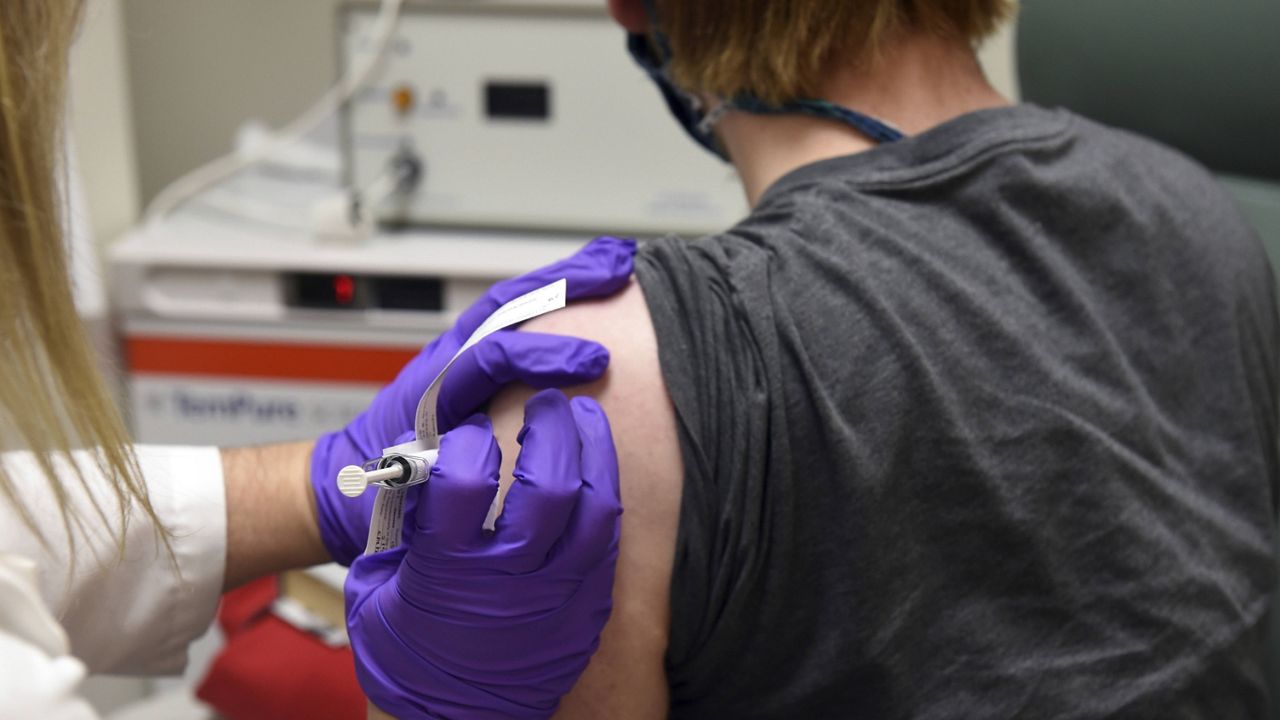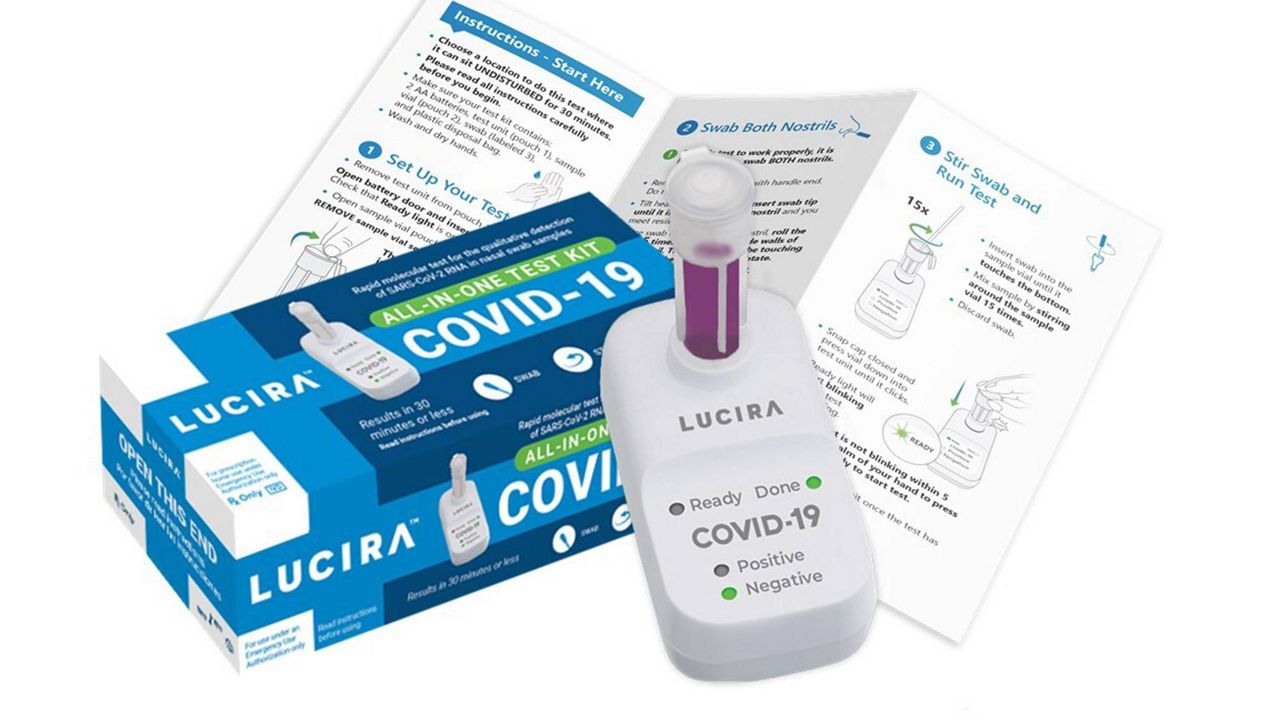OHIO — When the first COVID-19 vaccine doses are ready to be administered, 10 Ohio hospitals will be responsible for vaccinating the health care workers who are at the top of the list to get the shots.
The drug manufacturer Pfizer plans to apply for emergency use authorization “within days,” meaning hospitals could start administering the doses very soon. Moderna plans to seek approval for its vaccine imminently as well.
On the list of hospitals that will administer the vaccine doses: Mercy Health St. Vincent Hospital, Cleveland Clinic, Metro Health Medical Center, Mercy Health – Springfield Regional Medical Center, Ohio State University Hospital, OhioHealth Riverside Hospital, Aultman Hospital, University of Cincinnati Medical Center, OhioHealth O’Bleness Hospital, and Genesis Hospital.

OhioHealth has been planning for months to administer vaccine doses and has invested in two ultra-cold freezers to store doses, said Dr. Joseph Gastaldo, system medical director of infectious diseases. These freezers, which are critical to administering the vaccine, are typically only found at research hospitals.
Preliminary data from both companies show that each vaccine is more than 94% effective. The research has yet to be analyzed by independent experts, but within Pfizer's trial, 170 individuals ended up getting sick from the virus — most had the placebo. Only eight had the actual experimental vaccine.
Pfizer says there's no serious side effects with the vaccine, other than some fatigue, which affected 4% of participants. The company plans to submit the efficacy and safety data from the study for peer-review in a scientific journal once the analysis is completed.
U.S. officials hope to have 20 million doses of both the Moderna and Pfizer vaccines available for distribution by the end of next month.
According to CNN, authorization of the vaccines from the Food and Drug Administration could come on Dec. 10. Gastaldo said he expects the approval to come a bit later.
“I don't know if I'd say early December, I probably more say mid December, mid to late December,” he said. “When you look at the different groups of people who have to review the vaccine, that's not going to happen overnight.”
Gov. Mike DeWine said he is expecting 30,000 doses in the first shipment of Pfizer’s vaccine.
Both vaccines use novel mRNA technology, which allowed the companies to develop them in record time. But the style of vaccine creates distribution challenges because doses must remain frozen. The 10 Ohio hospitals were selected by the state for their “ultracold capacity,” meaning they have expensive freezers that can properly store the Pfizer vaccine, which needs minus 75 Celsius temperatures. The Moderna vaccine only requires minutes 20 Celsius temperatures.
Administering the Pfizer vaccine is incredibly complicated and requires precision and planning, Gastaldo said, adding that “the Moderna vaccine is complicated too, but not as complicated.” For these reasons, only hospitals with cutting edge resources will be distributing the first batches of vaccine doses that arrive in Ohio.
When the Pfizer vaccine is shipped, it will arrive on in a “shipper” on dry ice. The vaccine can only be held at room temperature for five minutes before it “falls” and becomes unusable. Once the vaccine comes off the dry ice, it can be kept in a refrigerator where it's good for five days.
The vaccine arrives in a dry form. To administer doses, a health care worker will “ ake" the vaccine, drawing up a liquid and diluting the vaccine to an administrable form. Once the vaccine is reconstituted and diluted, the doses have to be administered within six hours, or else they must be discarded.
Several weeks later, the same process has to happen again when patients come back for the second shot in the sequence. With just six hours on the clock once the vaccine is reconstituted, the key is making sure everyone who is scheduled to get a shot is at the right place at the right time, Gastaldo said.
“If you're scheduled to get it, we need you to be there on time to get the shot. If you don't show up, there needs to be a mechanism in place so somebody else can replace you in the queue so the dose does not get wasted,” he said said. “All of those things have to be operationalized to a T."
The news of the site selections comes as Ohio, as well as the nation, is seeing a surge in COVID-19 cases.
The Ohio Department of Health reported 7,079 new COVID-19 cases Tuesday, which is higher than the 21-day average of 5,224 cases.
"It means that one out of 100 people in the last two weeks was diagnosed with COVID-19," DeWine said at a press conference.
There were also 368 new hospital admissions Tuesday, which is the second-highest day-to-day increase in the state.
The U.S. surpassed 11,400,000 cases Wednesday, according to Johns Hopkins University.









